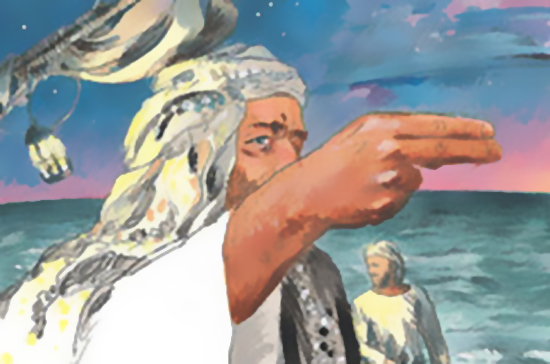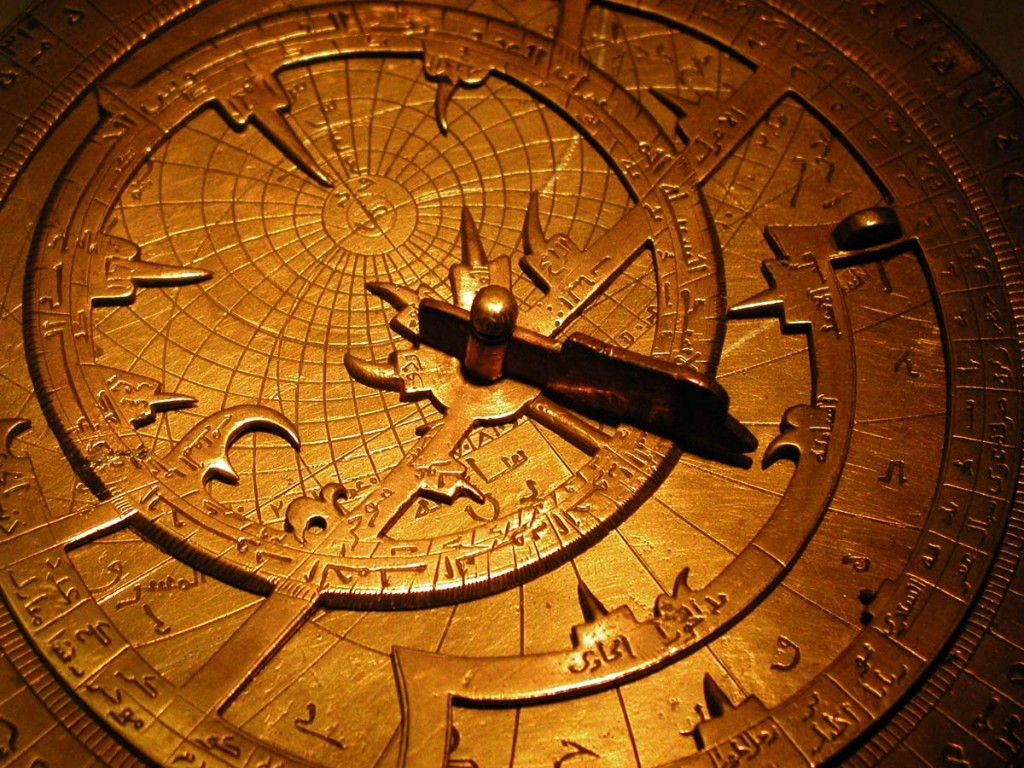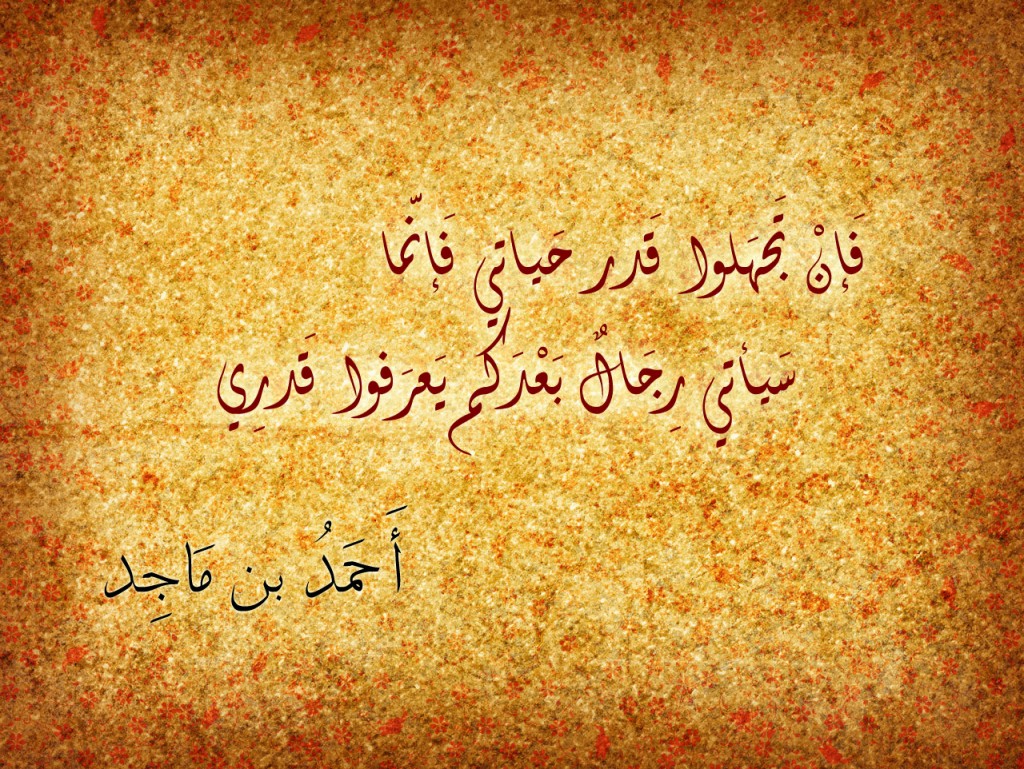Ahmad ibn Majid ibn Muhammad ibn Omar ibn Fadl ibn Dwaik ibn Youssef ibn Hassan ibn Hussein ibn Abi Mo’alaq ibn Abi Al-Raka’eb Al-Najdey.
The Shooting Star.
The Lion of the Seas.
His books, charts, and maps guided sailors for years, and his improvements on nautical tools and nautical inventions transformed how sailors navigated the seven seas forever.
He was a Muslim Arab, navigator, cartographer, and author; born to a famous family of seafarers around 824 AH/1421 CE, in Julphar, Sharjah, one of the emirates of the UAE. Back then it was part of the coast of Oman.
As a young boy he heard stories from his father, who was also a famous navigator, about the lands beyond the Red Sea and the Indian Ocean; lands that he would soon sail himself. The conditions that his father set for him were: to perfect his writing and reading, to memorize the Quran, and read the books about sea travel that his father collected, and learn what’s in them by heart.
When he turned 17, and when he had fulfilled his father’s conditions, he was ready to embark on his maiden voyage, his first job was to man the rudder and do measurements.
Ibn Majid’s contributions to Navigation are numerous, his inventions, and innovations on the tools of the trade changed the way navigators worked forever and became the standard; his book Kitab al-Fawa’id fi Usul ‘Ilm al-Bahr wa ’l-Qawa’id (Book of Useful Information on the Principles and Rules of Navigation), written around 1490, considered to be his most important work, is a navigation encyclopaedia, describing the history and basic principles of navigation, lunar mansions, rhumb lines, the difference between coastal and open-sea sailing, the locations of ports from East Africa to Indonesia, star positions, accounts of the monsoon and other seasonal winds, typhoons and other topics for professional navigators. He drew from his own experience and that of his father, also a famous navigator, and the lore of generations of Indian Ocean sailors. Source.
What made Ahmad ibn Majid far superior to a lot of navigators and sailors of his day is that he was not just a navigator, he was a very learned navigator, and from his writings we know that he was a polyglot who knew Tamil, East African, Persian, as well as Arabic. He wrote about geography, religion, history, literature, and lineages. He wrote over 34 poems and prose about the science of navigation with about 4,603 verses. He was also an accomplished cartographer.
He revolutionized navigation by placing the compass inside a box; it is a misconception that the invention of the compass is attributed to him; Chinese sailors have used it since the 9th century CE. He just made it better. He also mastered the use of fingers and improved on a wooden tablet called the Kamal, they were both used to determine latitude based on the Pole Star’s height in the horizon. This set of Age of Exploration videos on the Mariners’ Museum website shows how some of the navigation tools used in the middle ages were used, the first video on the list is about the Kamal and the third is about the Astrolabe.
Ibn Majid and Vasco da Gama
Ahmed bin Majid’s efforts in the mid-15th century helped the Portuguese navigator Vasco da Gama in completing the first all water trade route between Europe and India by using an Arab map then unknown to European sailors.
The question is: Did he personally guide da Gama in his voyages like a lot of history books claim?
Some references claim that da Gama coaxed the information out of ibn Majid over a drink after he got drunk enough! While others claim that he guided da Gama that the king of Malindi asked him to do it as a favour and he did it to honour the king! And others claimed he did it out of pure scientific discovery!!
In the mid 15th century CE Muslims and Europeans were still engaged in wars mostly for dominance over the trade routes, Crusades had gone out of fashion by then, add to that that navigators held on to their maps as treasures and navigators from one nation would probably never share their trade secrets with another nation of the same denomination, let alone a sworn enemy.
Ibn Majid was a very devout Muslim, which meant he adhered to the teachings of Islam, and that included no consumption of alcohol. It shows in his writings:
وينبغي للمعلم – يقصد ربان السفينة أو قائدها – أن يكون عادلاً تقياً لا يظلم أحداً مقيماً على طاعة الله ، متقياً الله حق اتقائه تعالى
A teacher – the Captain or Commander of the ship – must be pious and just, never oppressive, always obedient to Allah, properly mindful of Allah in all his actions.
How would someone with such philosophy willingly get drunk and give away a secret that would contribute greatly to the demise of Islamic dominance over the Indian Ocean and Red Sea and the trade routes to China and India?
His Highness Sheikh Sultan ibn Mohamed Al-Qasimy, the ruler of Al-Sharjah in the UAE, wrote an essay in the defence of Ahmed ibn Majid called “A Declaration to the Industrious Historians of the Innocence of ibn Majid”, where he analyses and compares literature from the time of da Gama and ibn Majid from Portugal, India, and the Ottoman Empire. He questioned the evidence and after great lengths he arrived at the conclusion that it was not ibn Majid who was guide to da Gama in his path through the Indian Ocean, rather it was a Christian-Gujarati from India who was in Malindi at the time.
This was just a glimpse into the life of one of the most famed Navigators and Explorers of all time; I believe one would need volumes just to cover his history and his travels.
For more about Ahmad ibn Majid, the Astrolabe, and Rhumb Lines please visit:
http://www.saudiaramcoworld.com/issue/200504/the.navigator.ahmad.ibn.majid.htm
http://www.alshamsi.net/friends/b7ooth/history/ahmed_binmajed.html (Arabic)
http://ar.wikipedia.org/wiki/أحمد_بن_ماجد (Arabic)
http://en.wikipedia.org/wiki/Astrolabe
http://en.wikipedia.org/wiki/Rhumb_line













Dear Khaled, you are speaking from a very nationalistic point of view. Any figure in history can be written about and researched, otherwise we would never learn about them. Back in the time of Ahmed ibn Majid there were no borders, and it was all Muslim lands, regardless of who ruled where.
In this day and age, everything can be found online, good information and misinformation. That’s why works like Sheikh Sultan’s is very welcome, and important, as it defends the honour of a Muslim, Arab hero. And if you read through the post to the end, you will realise he was doing just what you said: correcting wrong information written by foreigners.
I hope that answered your question and maybe made you feel a little more proud like I am.
Regards,
Islam
Please let me know if its really true that a non-Omani person as you wrote here sultan bin mohammed alqasmi wrote any essay about the pure Omani navigator Ahmed bin Majid. As nobody can write an essay without taking the permission from the oman ministry of heritage to correct any wrong information that may be written by foreigners about Ahmed bin Majid.
Sincerely
Khalid
Oman
Muscat